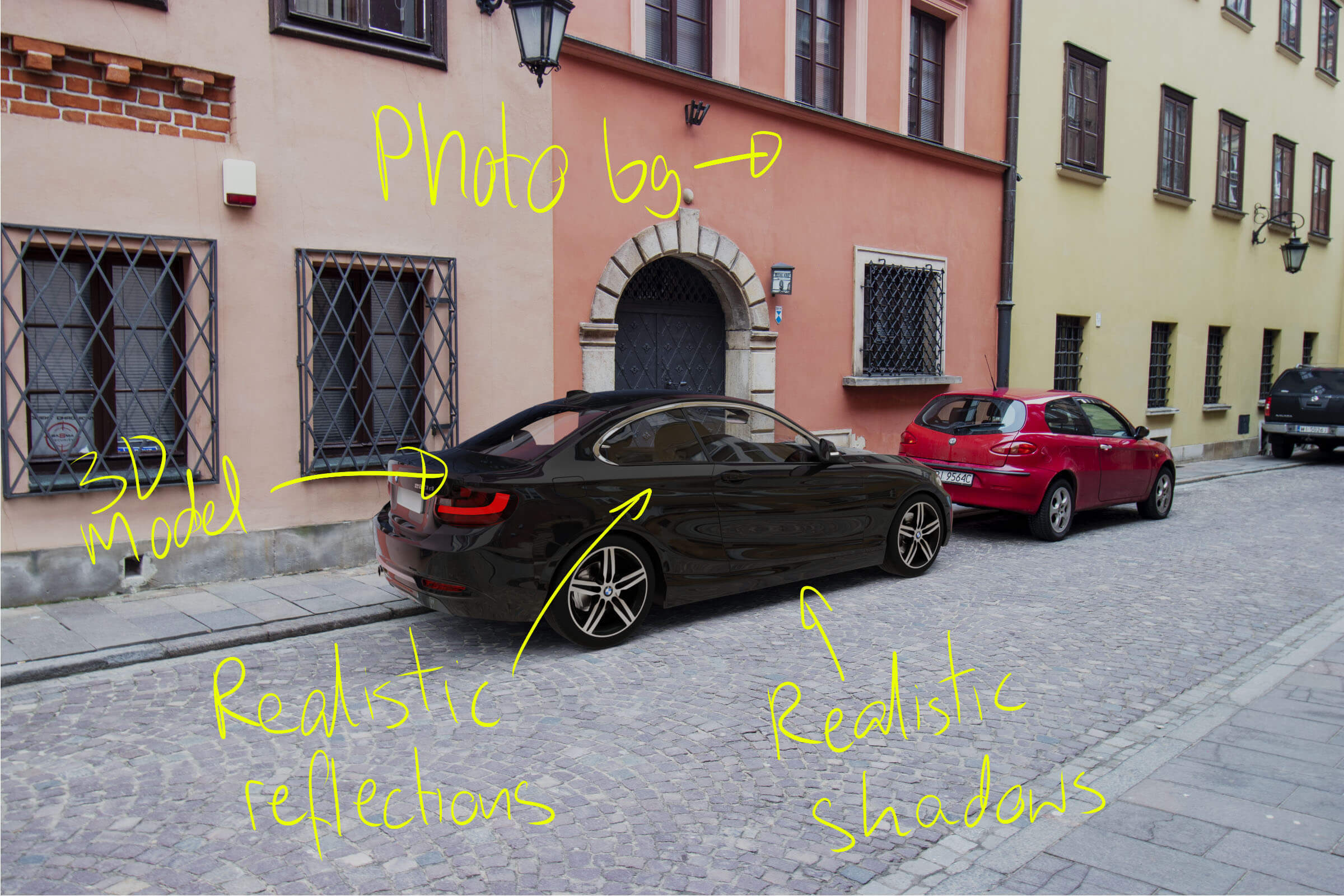When it comes to 3D rendering, lighting is one of the most important factors that can make or break the final result. And while traditional methods of lighting ( such as sun lamps) adding artificial lights to a scene, can work well, there's another option that's becoming increasingly popular - using HDRI environmental textures to light a scene in Blender.
HDRI (High Dynamic Range Imaging) environmental textures are essentially 360-degree images that capture lighting information from the real world, including the intensity and direction of light. During creation camera captures hundreds of photos with different exposure, resulting in an extremally high dynamic range of up to 30 EV during sunny day. When used in 3D software, these textures can be used to create realistic lighting effects that mimic real-world lighting conditions, resulting in more natural and believable renderings.
So, what are some of the advantages of using HDRI environmental textures to light a scene in Blender? Let's take a closer look.

As mentioned, HDRI environmental textures capture real-world lighting conditions, which means they can be used to create highly realistic lighting in 3D renderings. This is because the textures capture not only the intensity of light, but also the direction and color of the light, resulting in lighting that looks much more natural and convincing than traditional artificial lighting.
Using HDRI environmental textures to light a scene (especially outdoors) can also be a huge time-saver compared to traditional lighting methods. Rather than having to manually place and adjust lights in a scene, simply selecting an appropriate HDRI texture can quickly create a natural-looking lighting setup. Additionally, HDRI textures can be easily switched out, or tweaked allowing for quick and easy experimentation with different lighting and nodes setups.
HDRI environmental textures also have the added benefit of improving reflections and refractions in 3D renderings. This is because the textures capture the environment around the scene, which is then reflected or refracted in materials within the scene. This can result in much more realistic and believable materials, such as glass or metal, that accurately reflect and refract the environment around them.
HDRI environmental textures can be used in a wide range of 3D rendering scenarios, from architectural visualizations to product renderings to character animations. This versatility makes them a great choice for any 3D artist looking to create realistic lighting in their work.
In conclusion, using HDRI environmental textures to light a scene in Blender can be a highly effective and efficient way to create realistic and believable 3D renderings. Whether you're a seasoned professional or just starting out in 3D rendering, incorporating HDRI textures into your workflow can help take your work to the next level.
If you are just beginning your journey with Blender you can download and test my HDRI completely free of this site. You can also check how to use free HDRI from hdri-workshop.com in blender in this blog post.
Frequently Asked Questions
Contact me